Mooni: budgeting made easier
Impact
The app reduced the effort required to track expenses by streamlining categorization and surfacing insights visually.
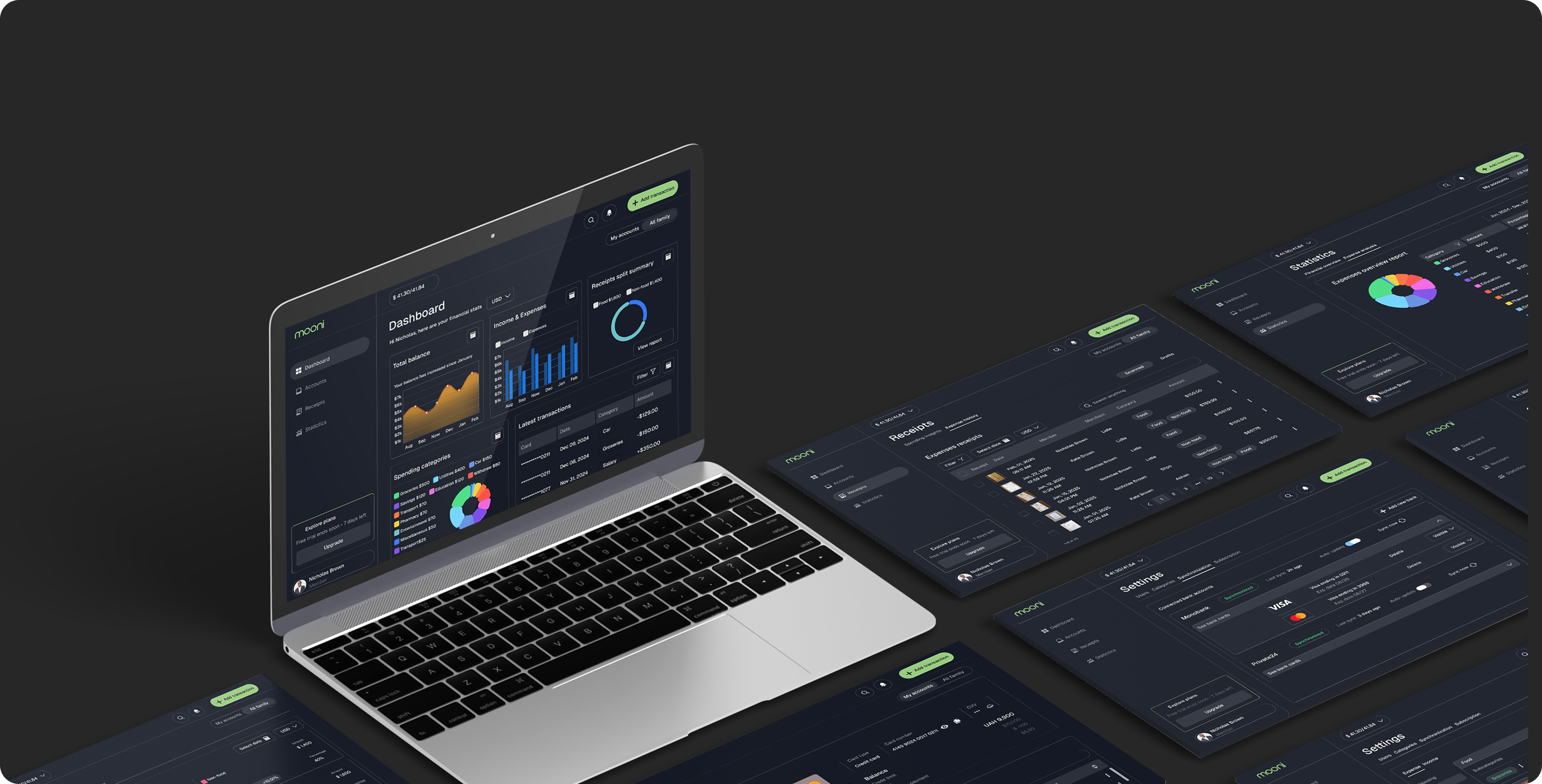
Client & Product
Mooni is a desktop budgeting application designed to give users full visibility into their personal finances. It consolidates accounts, receipts, and spending categories into one intuitive platform. Unlike existing financial dashboards, Mooni emphasizes clarity, customization, and seamless categorization of expenses. Its minimal UI reduces friction, allowing users to focus on insights, not clutter.
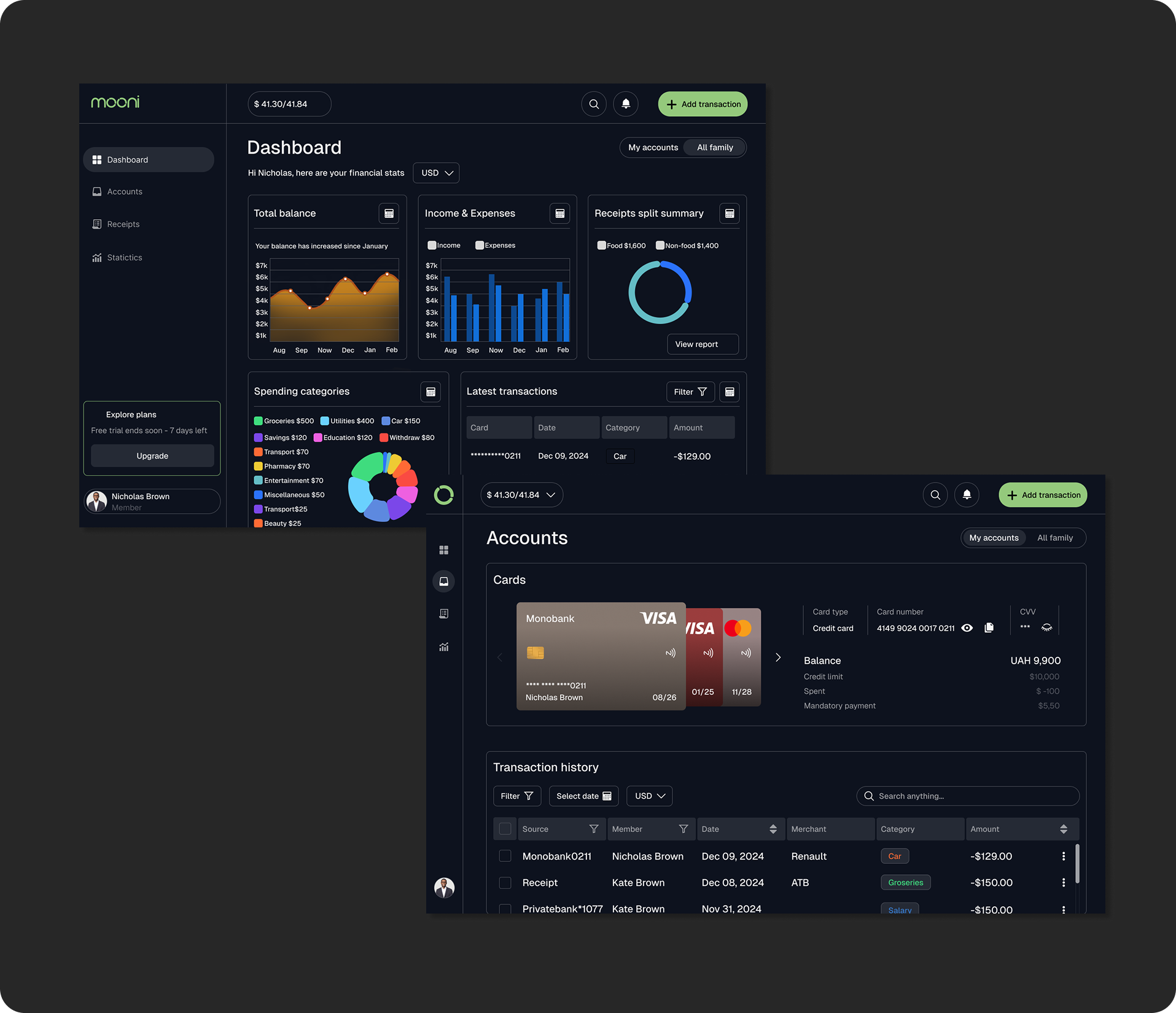
Business Requirements & Constraints
The project requirements were established through research on personal finance tools, user pain points, and technical feasibility. Based on these insights, I gained a clear understanding of the project objectives, product capabilities, and technical constraints that would shape Mooni’s design.
MOONI'S OBJECTIVES FOR THE PRODUCT
. Delivering real-time financial insights that are both accurate and easy to interpret.
. Designing a scalable system that supports multi-account syncing, receipt uploads, and future feature expansion.
. Ensuring a balanced user experience by handling data density while maintaining a clean, approachable interface.
MOONI'S OBJECTIVES FOR THE PRODUCT
. Delivering real-time financial insights that are both accurate and easy to interpret.
. Designing a scalable system that supports multi-account syncing, receipt uploads, and future feature expansion.
. Ensuring a balanced user experience by handling data density while maintaining a clean, approachable interface.
Challenges
Most existing budgeting apps overwhelm users with complexity, making financial management stressful rather than empowering. Users struggle with decision fatigue when categorizing expenses and often find visualizations unclear or too technical. Mooni set out to solve these challenges by providing an interface that makes financial data approachable, actionable, and easy to digest.
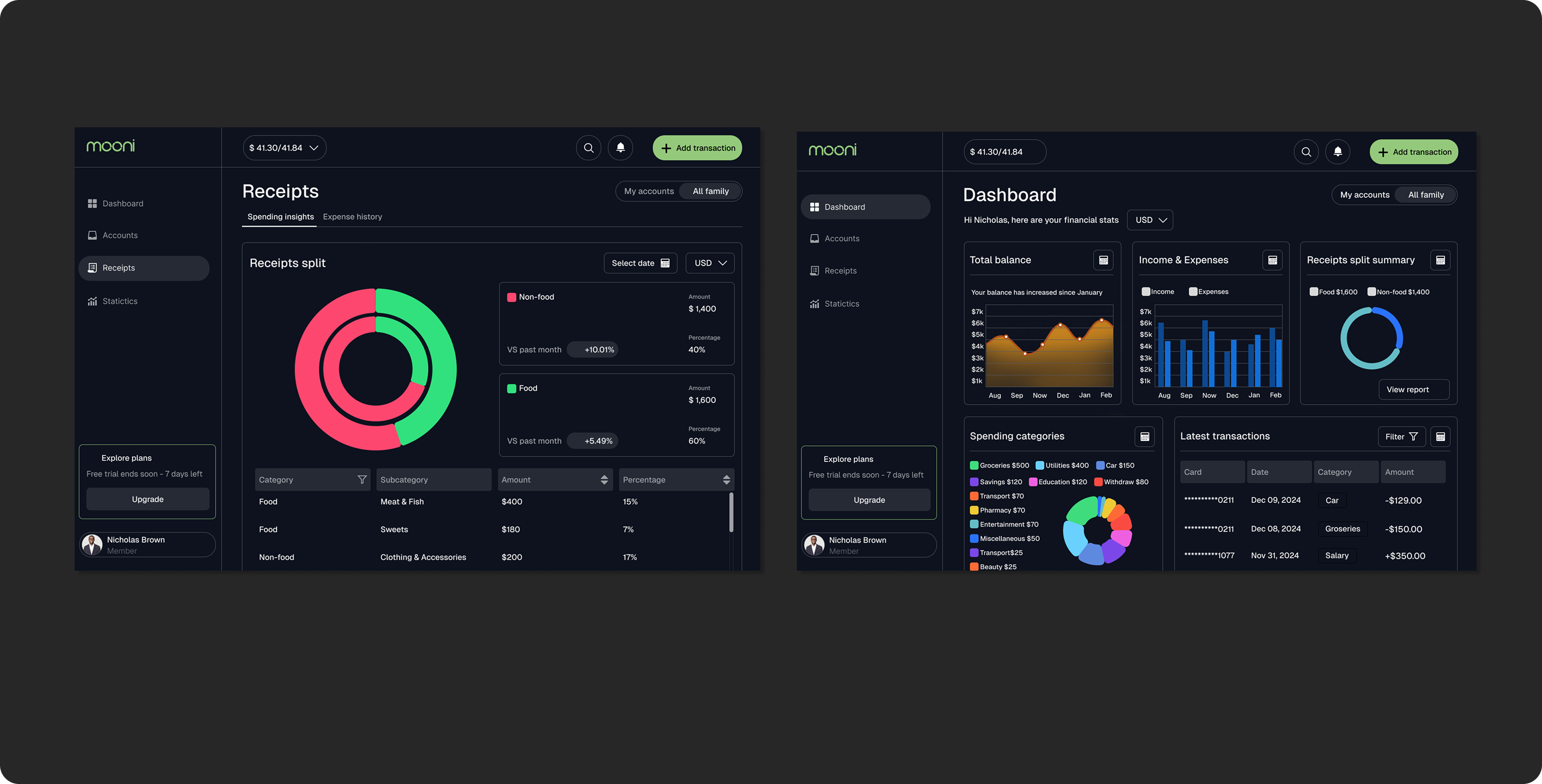
Market UX/UI Research
I analyzed leading financial tools including MoneyWiz, Copilot, and Expenses to understand their strengths, limitations, and user experience approaches. While each offered valuable features, gaps emerged in accessibility, ease of onboarding, and data visualization. These findings informed Mooni’s positioning as a consumer-friendly yet professional tool that combines advanced insights with a clean, approachable interface.

Wireframing
High-fidelity wireframes were created to test flows for the dashboard, accounts, receipts, statistics, and settings. The goal was to maintain consistency across sections while keeping layouts modular and easy to scan. Early prototypes emphasized quick access to insights while minimizing extra clicks, ensuring users could move seamlessly from overview to detail.

Testing Hypothesis
The design hypothesis was that users would manage finances more effectively with clear categorization and simplified visualization. Prototype testing confirmed that users valued customizable categories and receipt scanning, though some expressed interest in clearer family-sharing features. These insights validated the approach while highlighting future opportunities.
Selected UX/UI Improvements
Here are some design approaches that served as the foundation for the whole system redesign:
1. CLEAN DATA VISUALIZATION
I introduced simplified bar, donut, and pie charts to transform raw financial data into clear, readable insights. By reducing visual noise and focusing on essential metrics, users can quickly interpret their spending patterns and make informed financial decisions without feeling overwhelmed.
I introduced simplified bar, donut, and pie charts to transform raw financial data into clear, readable insights. By reducing visual noise and focusing on essential metrics, users can quickly interpret their spending patterns and make informed financial decisions without feeling overwhelmed.
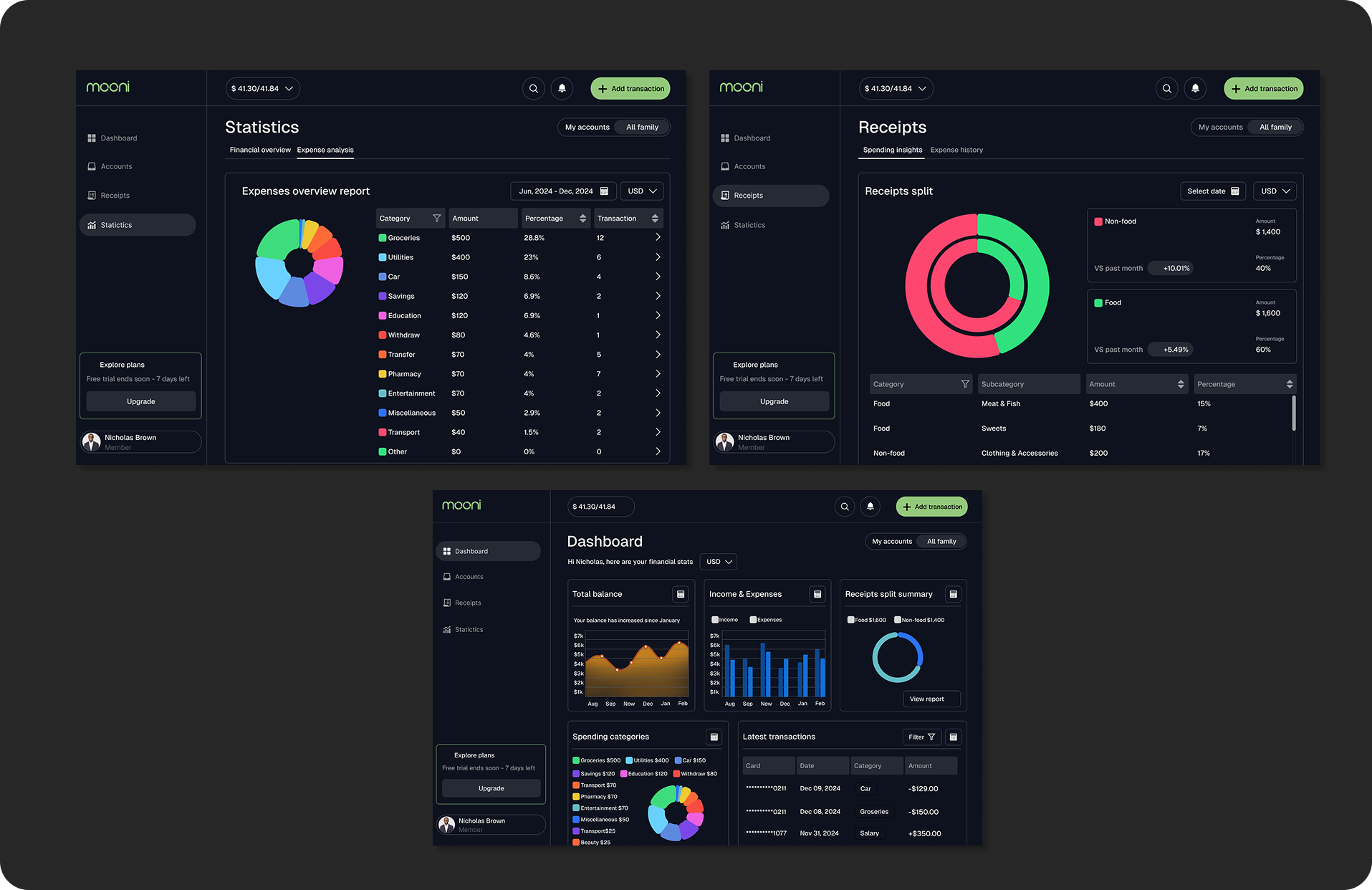
2. CUSTOMIZABLE CATEGORIES
To give users more control over how their finances are organized, I added the ability to create, edit, and personalize categories. This flexibility ensures that the app adapts to diverse spending habits and life situations, making it more relevant and user-centric.
To give users more control over how their finances are organized, I added the ability to create, edit, and personalize categories. This flexibility ensures that the app adapts to diverse spending habits and life situations, making it more relevant and user-centric.
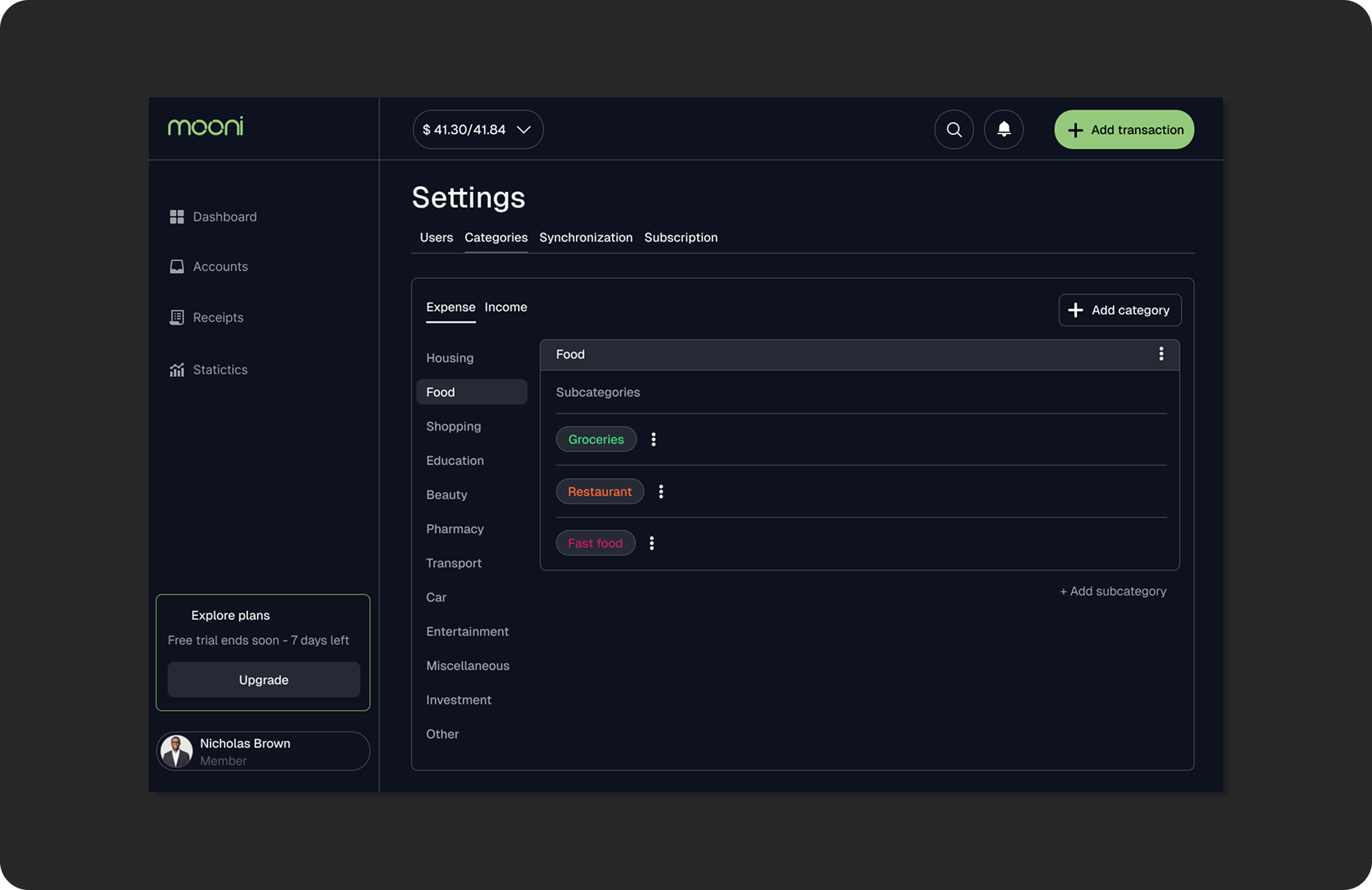
3. RECEIPT SCANNING FLOW
I redesigned the receipt management system to include calendar and filter integrations. This streamlined the process of uploading, reviewing, and searching receipts, allowing users to efficiently track expenses while maintaining a structured financial history.
I redesigned the receipt management system to include calendar and filter integrations. This streamlined the process of uploading, reviewing, and searching receipts, allowing users to efficiently track expenses while maintaining a structured financial history.
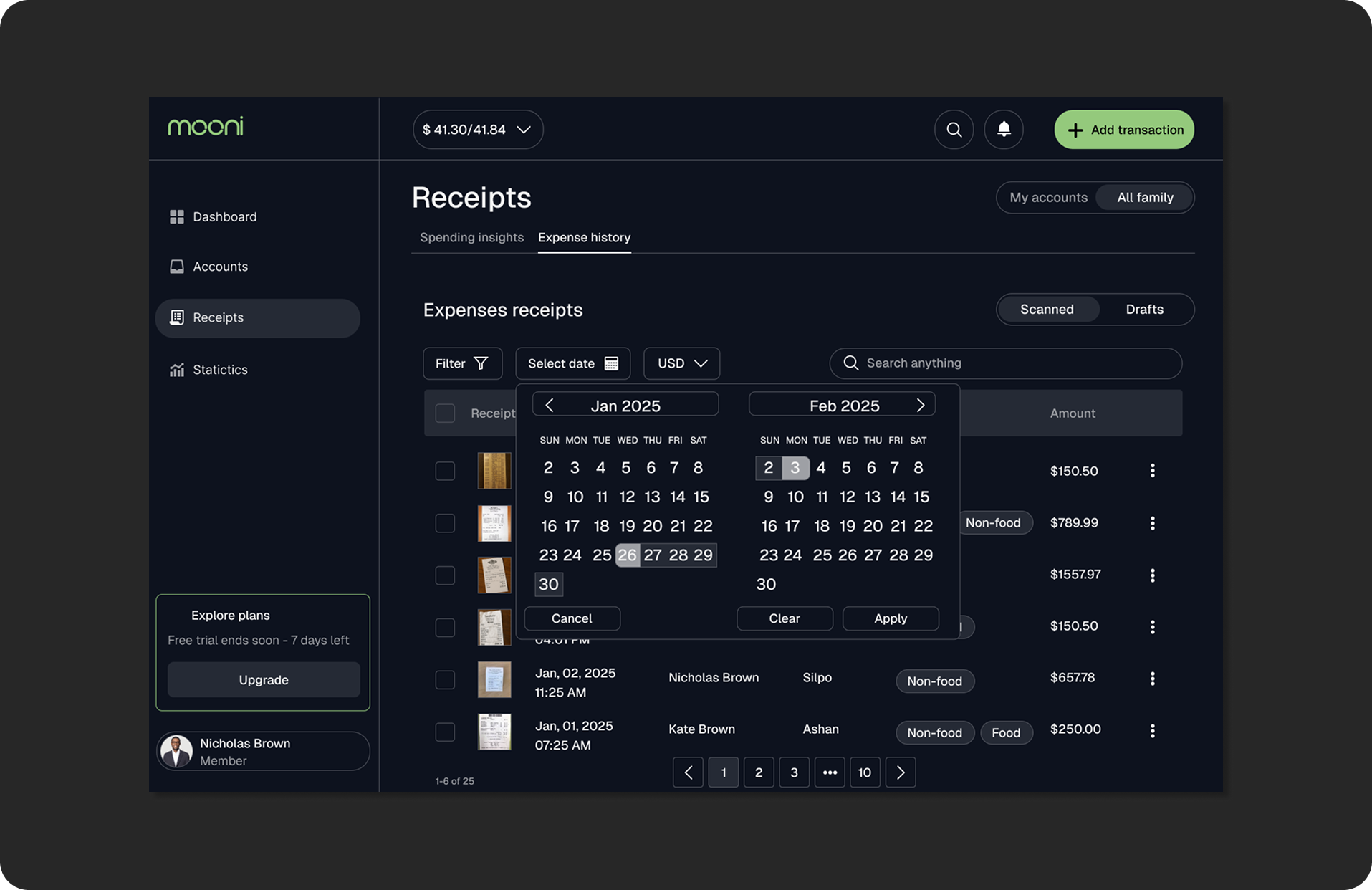
Impact
. Reduced time to categorize expenses by simplifying workflows.
. Increased financial clarity with visual spending breakdowns.
. Designed to lower stress around budgeting by making finances feel approachable, not intimidating.
. Increased financial clarity with visual spending breakdowns.
. Designed to lower stress around budgeting by making finances feel approachable, not intimidating.
Summary
Mooni is a budgeting platform that balances clarity, usability, and insight. Grounded in research and designed with a focus on consistency and simplicity, it solves the pain points of cluttered financial tools. Its scalable framework makes it not just a budgeting app, but a potential financial wellness ecosystem.
